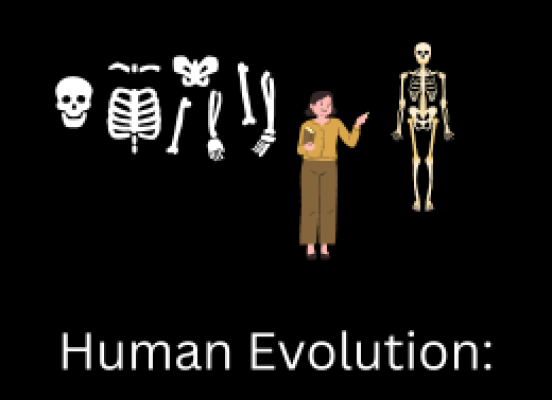

Fossils and Human Evolution: Tracing Our Ancestral Roots
The study of fossils plays a crucial role in understanding human evolution and tracing our ancestral roots. Fossils, the preserved remains or traces of ancient organisms, provide valuable insights into the evolutionary history of life on Earth, including the origins and development of our own species, Homo sapiens. By examining fossilized bones, teeth, and other remains, paleontologists can reconstruct the ancient environments, track evolutionary changes, and unveil the story of our past.
The study of human evolution begins with the search for our earliest ancestors. Fossils dating back millions of years serve as vital clues in this quest. One of the most famous and important discoveries in human evolution is the fossilized remains of Australopithecus afarensis, commonly known as "Lucy." Discovered in Ethiopia in 1974, Lucy is estimated to be about 3.2 million years old. This remarkable find provided significant evidence for the existence of an upright-walking hominin species and helped bridge the gap between apes and humans.
Further discoveries, such as the Homo habilis fossils found in Tanzania, revealed our ancestors' increasing tool-making abilities and marked a significant milestone in human evolution. The subsequent appearance of Homo erectus, with its larger brain size and advanced hunting skills, demonstrated further advancements in human development. Fossils of Homo erectus have been found across Africa, Asia, and Europe, suggesting their widespread distribution and adaptability.
One of the most exciting and debated periods in human evolution is the emergence of our own species, Homo sapiens. Fossil evidence from various regions, including Africa and Europe, indicates a gradual transition from earlier hominin species to Homo sapiens. The discovery of the Jebel Irhoud fossils in Morocco, dating back approximately 300,000 years, provided valuable insights into the early stages of Homo sapiens' evolution. These fossils exhibit a combination of archaic and modern human traits, suggesting a complex evolutionary process.
The study of ancient DNA extracted from fossils has also revolutionized our understanding of human evolution. By analyzing the genetic material preserved in bones and teeth, scientists have gained remarkable insights into our genetic ancestry and the interbreeding events between different hominin species. The discovery of Neanderthal DNA in modern human populations, for instance, highlights the interbreeding that occurred between Homo sapiens and Neanderthals thousands of years ago.
In addition to human ancestors, fossils of other ancient organisms provide important context for understanding our evolutionary history. For example, the discovery of the famous Burgess Shale fossils in Canada revealed a diverse range of Cambrian life forms that existed over 500 million years ago. These exceptionally preserved fossils offer a glimpse into the early stages of animal evolution and the development of complex body structures.
Fossils also provide evidence of environmental changes throughout Earth's history. By examining fossilized pollen grains, plant remains, and marine organisms, scientists can reconstruct ancient ecosystems and track shifts in climate and habitat. Such information helps us understand the environmental conditions that shaped human evolution and the adaptations our ancestors developed to survive and thrive.
Advancements in technology and scientific techniques have greatly enhanced our ability to study fossils and extract information from them. CT scanning and 3D imaging techniques allow scientists to examine internal structures and reconstruct fossilized organisms without damaging the specimens. Isotopic analysis of fossil teeth and bones provides insights into diet and migration patterns, shedding light on the behavior and ecological niches of ancient species.
However, it is important to acknowledge the limitations of fossil records. Fossilization is a rare and selective process, leading to significant gaps in our knowledge. Many ancient species may have existed but left no trace in the fossil record. Furthermore, the preservation and discovery of fossils are influenced by geological processes and human activities, making it a challenging task for paleontologists to piece together the complete story of human evolution.
Despite these challenges, the study of fossils continues to be a dynamic field, with new discoveries constantly reshaping our understanding of human evolution. Ongoing excavations and research in various parts of the world offer the potential for exciting future findings that could further illuminate our ancestral roots.
In conclusion, fossils are invaluable tools in the study of human evolution, allowing us to trace our ancestral roots and uncover the story of our past. These remarkable remains provide insights into the development of our species, the environmental changes that shaped our evolution, and the interactions between different hominin species. By examining and analyzing fossils, scientists continue to unlock the secrets of our evolutionary history, expanding our knowledge of who we are and where we came from.